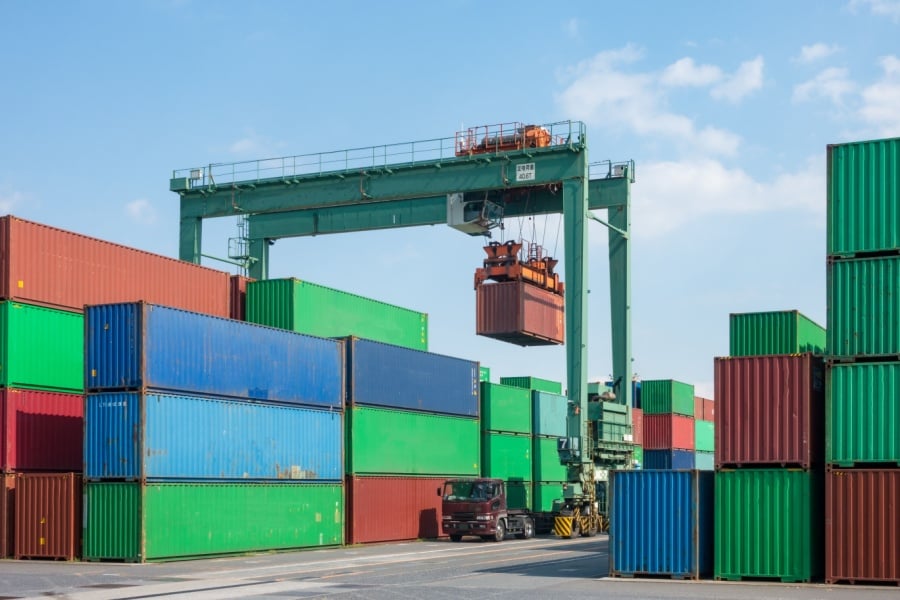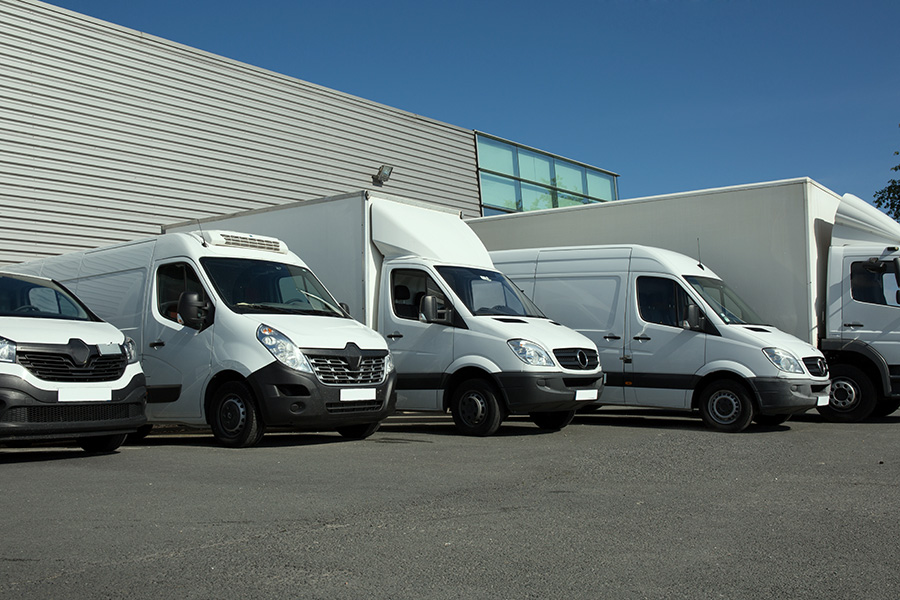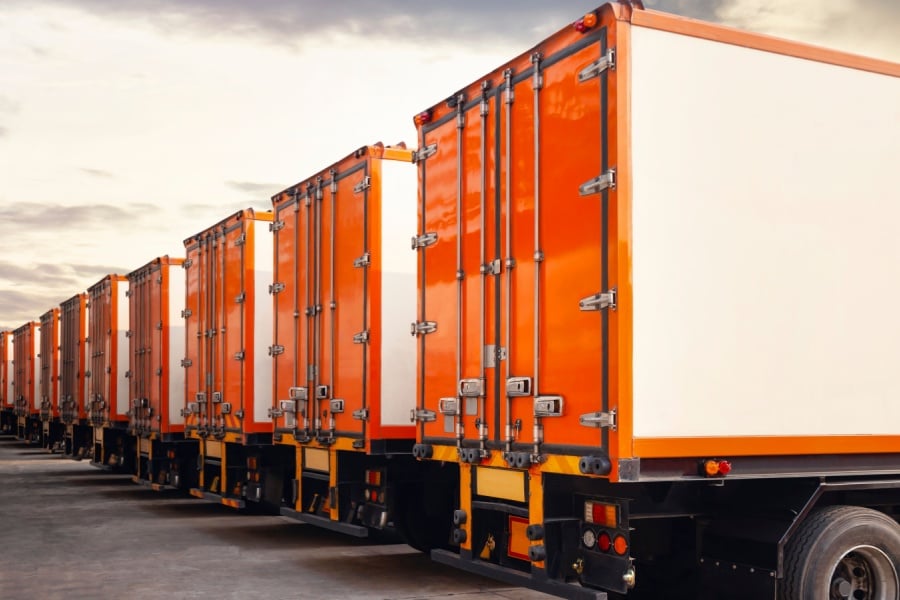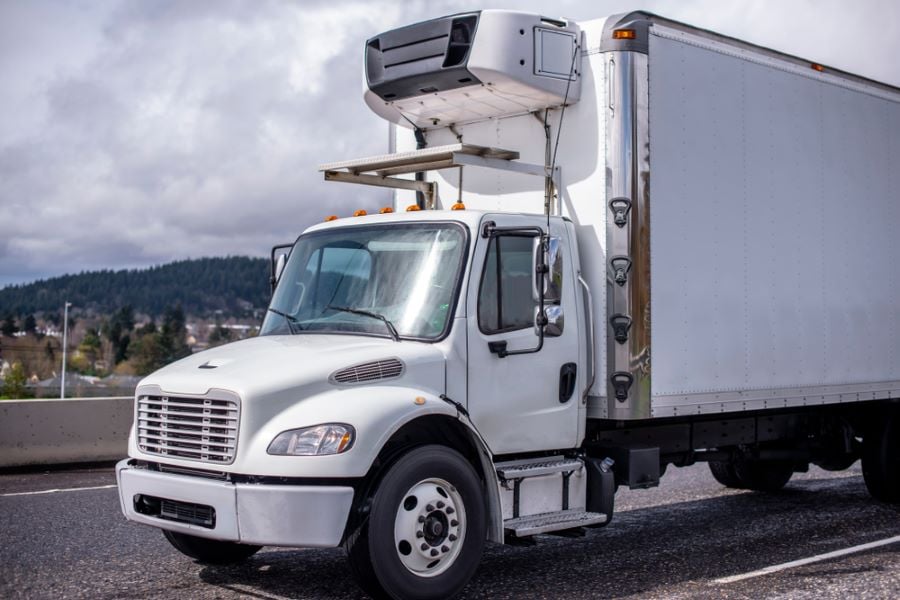Updated March 12, 2025
When you're talking about moving goods, specifically in the world of transportation, supply chain, and logistics, where there are so many options for effectively getting from A to B (and sometimes C and D), understanding industry terminology is indispensable. We often hear terms like "drayage" and "cartage" being thrown around. Still, many people find themselves scratching their heads when discussing their differences in the trucking industry. Let's clear things up and discuss the differences between drayage and cartage.
What is Drayage?
Drayage is a vital link in the supply chain for import or export. For example, a cargo ship arrives at the port, its massive containers overflowing with goods. This is just the beginning of the journey for these products, as they still need to be transported to a warehouse or distribution center. Drayage is moving these containers from the port to their final destination. It's an important step in the supply chain, ensuring that goods reach their customers on time and in pristine condition.
Drayage involves more than just moving containers on flatbed trailers or chassis. It requires a delicate dance of logistics, coordination with various stakeholders, and risk management, such as traffic congestion and equipment breakdowns.
To remain competitive, companies that offer drayage solutions must be highly efficient, using technology and data analysis to optimize routes, reduce transit times, and minimize costs.
Types of Drayage
Drayage isn't one-size-fits-all. There are different types of drayage, each with its own purpose:
- Pier Drayage: This is your classic port-to-warehouse movement.
- Expedited Drayage: Got time-sensitive cargo? This involves quick coordination to avoid delays and send goods to the port ASAP. We're talking emergency supplies or that critical piece of machinery needed for a rush repair.
- Shuttle Drayage: Sometimes, containers need a little pit stop before their next journey. Shuttle drayage steps in when containers are held at a warehouse until their designated mode of transport is ready.
- Door-to-Door Drayage: This is about as straightforward as it sounds. Cargo gets picked up and delivered directly to the receiver's door.
- Inter-Carrier Drayage: Imagine passing the baton in a relay race. Here, goods move from one transportation company to another, often involving different modes of transportation. For example, freight could be moved from an airplane at the port to a waiting ship and then to a trailer.
- Intra-Carrier Drayage: This involves moving material between locations using a single transportation company. A freight forwarder might use this method to keep container drayage costs lower.
What is Cartage?
While drayage often deals with those giant containers, cartage is more about breaking down shipments and providing local transportation solutions for the "last mile" of the journey. We're talking about delivering those smaller units to their final destination. You see, with cartage, the contents of a container are unpacked at a warehouse and then redistributed to several different locations, often within the same city or metropolitan area.
Cartage generally involves smaller trucks (box trucks, reefers, or dry vans) navigating busy city streets and often making multiple stops along the way. Businesses with regular delivery routes within a city benefit tremendously from reliable cartage operations.
Drayage vs. Cartage: The Key Differences
These terms seem similar at first glance since they both involve moving goods at the end of the day. But as you've started to see, there are distinct characteristics that differentiate the two:
Distance Covered
Drayage focuses on shorter distances between intermodal transport points (like ports and rail yards) and warehouses or distribution centers. Cartage, however, caters more to local deliveries within a specific area, such as a city.
Type of Cargo
Drayage generally involves transporting whole shipping containers during import or export of goods, often across state lines or international borders. On the flip side, cartage tends to affect smaller shipments. We're talking less-than-truckload (LTL) deliveries, usually originating from a warehouse or distribution center where larger shipments have been unpacked.
Regulation & Classification
Here's a fundamental distinction: Drayage, involving the transportation of freight containers, often requires state and local governments to issue Drayage Truck Registry (DTR) stickers to drayage drivers and vehicles. These stickers are needed to enter ports and intermodal ramps. Meanwhile, cartage typically doesn't have that level of formal categorization from a regulatory standpoint.
Equipment Used
If you think about it, different jobs call for different tools. The type of vehicles used also highlights the distinctions. For drayage operations, specialized trucks, often referred to as "drayage trucks," are equipped with a "chassis," essentially a skeletal trailer frame designed specifically for hauling those large intermodal containers. Cartage usually relies on smaller, more agile trucks or vans to better maneuver tight urban streets and make multiple deliveries.
Drayage Services from a 3PL
Engaging third-party logistics (3PL) providers for drayage services offers companies significant advantages in managing their supply chains. One key benefit is the flexibility to handle various cargo types and volumes. 3PL providers possess the expertise and resources to accommodate diverse shipments, from small parcels to large freight, ensuring efficient and reliable transportation. This adaptability allows businesses to scale operations up or down in response to market demands without the need for substantial investments in infrastructure or personnel.
Additionally, 3PL providers often offer transloading and cross-docking services, which can streamline distribution processes and reduce storage costs. Transloading involves transferring cargo from one mode of transportation to another, facilitating efficient movement through the supply chain. Cross-docking, on the other hand, entails unloading materials from inbound shipments directly onto outbound vehicles with minimal or no storage time in between. This process reduces handling and storage costs, minimizes inventory holding times, and accelerates product delivery to customers. By leveraging these services, companies can enhance operational efficiency, reduce costs, and improve customer satisfaction.
Factors to Consider When Choosing Between Cartage and Drayage Services
For business owners who need the flexibility to rent commercial trailers or vehicles for deliveries, deciding between cartage and drayage requires careful thought. Let's break it down:
Shipment Size & Destination
If you’ve got a whole container of goods coming in and they're headed to your warehouse or a distribution center near the port or rail ramp, drayage is likely your best bet. However, cartage service might be more cost-effective if multiple deliveries are scattered throughout a city or metropolitan area.
Cost
Drayage services often involve more straightforward transportation. On the other hand, cartage can be a bit pricier due to those multiple handling points. Consider your budget constraints.
Cargo Handling & Safety
If your cargo is sensitive or fragile, minimizing handling is key to prevent damage. Since cartage could require unpacking and repacking containers, drayage might be a safer bet.
Making Informed Decisions for Your Supply Chain
Choosing the right approach can significantly impact your supply chain efficiency, affecting everything from transportation costs to overall delivery times. Understanding the nuanced differences between these transportation services allows you to make smart, cost-effective choices, ensuring that your goods are in the right hands. This deeper understanding can give you a real competitive edge. Whether you’re a seasoned logistics expert or just getting your feet wet, these details matter.
By choosing a partner like Ryder for flexible trailer rental solutions, you’ll work closely with an expert team by your side. This team, combined with Ryder’s comprehensive transportation management services, can provide additional capabilities to streamline your transportation needs.
FAQs About the Differences in Cartage vs Drayage in the Trucking Industry
What is the difference between cartage and drayage?
Cartage and drayage both transport goods over a short distance. However, the major distinction lies in their scale and scope. Drayage primarily involves moving whole containers from ports or rail yards to a distribution center within a 250-mile radius. On the other hand, cartage handles smaller shipments of goods that have already been removed from the freight container and are delivered within the local area or metropolitan region.
What is cartage in trucking?
Cartage in trucking refers to the transportation of goods over a short distance within a specific area or metropolitan region. Unlike drayage, cartage typically handles smaller shipments that have been unpacked and loaded from a container into a truck to then be delivered to various recipients. It frequently encompasses multiple deliveries within a single route.
What is the difference between a trucker and a drayage trucker?
A trucker transports goods over various distances and routes, while a drayage trucker specializes in moving containers. Drayage truckers play a critical role in intermodal shipping and have specialized knowledge and skills to safely and efficiently transport containers to and from ports, rail yards, and distribution hubs.
What is the difference between cartage and freight?
Freight is the overall term used for goods being shipped. However, cartage is a specialized form of transporting freight involving local, short-distance delivery within a city or metropolitan area after the goods have been removed from their containers.
Final Thoughts
Choosing between cartage and drayage can be simpler than finding a good parking spot. Remember, these concepts impact a company's operational flow in the ever-evolving world of freight and logistics. Knowing the ins and outs of your options makes all the difference.
Now that you better understand what we discussed regarding the differences in cartage vs drayage, you’ll be able to ask informed questions and work towards making smart choices that benefit your bottom line.




